Conflict Zones
India-Pakistan tensions: A brief history of conflict | India-Pakistan Tensions News
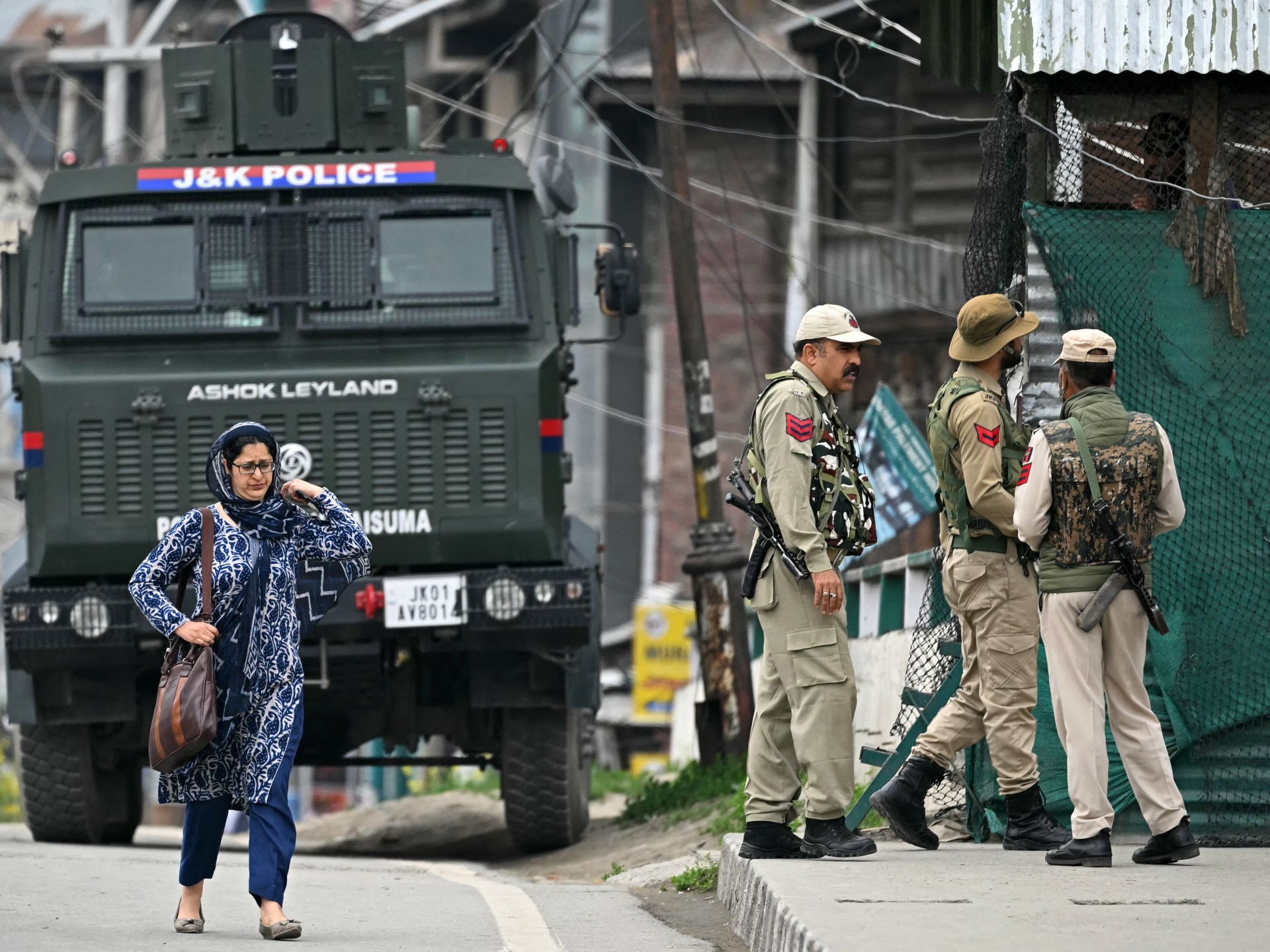
India and Pakistan are locked in a rapidly escalating military exchange that threatens to explode into a fully fledged war, triggered by a deadly attack on tourists in Indian-administered Kashmir on April 22 in which 26 civilians were killed, but rooted in decades-old hostilities.
On May 7, India launched a wave of missiles into Pakistan and Pakistan-administered Kashmir, striking at least six cities and killing at least 31 people – including two children – according to Islamabad. Since then, Indian drones have hit major Pakistani cities and military installations, and India has accused Pakistan to launching a barrage of missiles and drones at its cities and military facilities.
Alongside the missiles and drones, the nuclear-armed neighbours have also traded allegations and denials. India says its May 7 missiles only struck “terrorist infrastructure” while Pakistan insists civilians were killed. Pakistan denies that it launched missiles or drones towards India, and both claim to be victims of the other’s aggression.
Yet the origins of this latest crisis between India and Pakistan go back to their very formation as sovereign nation states in their current form. Here is a recap of the state of near-constant tensions between the South Asian neighbours.
1940s-50s: A tale of two countries
The Indian subcontinent was a British colony from 1858 until 1947, when British colonial rule finally ended, splitting the subcontinent into the two countries. The Muslim-majority Pakistan gained its independence on August 14 that year as non-contiguous and culturally distant zones, West Pakistan and East Pakistan. The Hindu-majority but secular India gained its independence on August 15, 1947.
The partition was far from smooth, causing one of the largest and bloodiest human migrations ever seen, displacing about 15 million people. The process also sparked horrific communal violence and riots between Muslims, Hindus and Sikhs across the region, in which between 200,000 and two million people died. Border disputes and separatist movements sprang up in the aftermath.
What stuck out as a major sticking point between the neighbours was the question of where the Muslim-majority Himalayan region, Kashmir, would go. The monarch of Kashmir initially sought independence and the area remained disputed.
In October 1947, the first war over Kashmir broke out when armed Pakistani tribesmen invaded the territory. The monarch of Kashmir asked India for its assistance in driving out the tribesmen. In return, the monarch accepted India’s condition for help – that Kashmir join India.
Fighting continued until 1948, when it ended with Kashmir divided. Pakistan administers the western part of Kashmir, while India administers much of the rest, with China holding two thin slices of Kashmir’s north. India claims all of Kashmir, while Pakistan also claims the part that India holds but not what China, its ally, holds.
1960s: Failed Kashmir talks and the second war
The decade started with a promise of better ties. In 1960, India and Pakistan signed the Indus Waters Treaty, a World Bank-mediated deal under which they agreed to share the waters of the six Indus Basin rivers they both relied – and still rely – on.
The treaty gives India access to the waters of the three eastern rivers: the Ravi, Beas and Sutlej. Pakistan, in turn, gets the waters of the three western rivers: the Indus, Jhelum and Chenab. After the April 22 Pahalgam attack, India has suspended its participation in the treaty but until recently, the deal stood as a shining example, internationally, of a water-sharing pact that survived multiple wars.
One of those wars would take place in the 1960s.
In 1963, the then-foreign minister of India, Swaran Singh and his Pakistani counterpart, Zulfiqar Ali Bhutto, held talks over the disputed territory of Kashmir. These talks were mediated by the United States and the United Kingdom.
While exact details of the discussions were not made public, no agreement was reached. In 1964, Pakistan referred the Kashmir case to the United Nations.
In 1965, the two countries fought the second war over Kashmir after between 26,000 and 33,000 Pakistani soldiers dressed as Kashmiri residents crossed the ceasefire line into Indian-administered Kashmir.
As the war escalated, Indian soldiers crossed the international border into Pakistan’s Lahore. The war ended inconclusively, with a ceasefire. In 1966, Indian Prime Minister Lal Bahadur Shastri and Pakistani President Mohammad Ayub Khan signed an agreement in Tashkent, mediated by the Soviet Union, restoring diplomatic and economic relations.
1970s: Bangladesh and the first step towards a nuclear race
In 1971, East Pakistan and West Pakistan went to war after then-president Zulfikar Ali Bhutto refused to let Sheikh Mujibur Rahman, the leader of the East Pakistan-based Awami League, assume the premiership. This was despite the fact that the Awami League won the majority of seats in Pakistan’s 1970 parliamentary elections.
In March, the Pakistani military began a crackdown in East Pakistan’s Dhaka and in December, the Indian army got involved. The Pakistani army eventually surrendered. East Pakistan became the independent country of Bangladesh.
In 1972, Bhutto and Indian PM Indira Gandhi signed an agreement in the Indian town of Simla, called the Simla Agreement where they agreed to settle any disputes by peaceful means.
The agreement established the Line of Control (LoC) between the two countries, which neither side is to seek to alter unilaterally, and which “shall be respected by both sides without prejudice to the recognised position of either side”.
In 1974, Kashmir’s state government affirmed that it “is a constituent unit of the Union of India,” an accord rejected by Pakistan.
In the same year, India detonated a nuclear device in an operation codenamed “Smiling Buddha”. India deemed the device a “peaceful nuclear explosive”.
1980s: The rebellion in Kashmir
By the early 1980s, Kashmir was back at the centre of India-Pakistan tensions. A separatist movement took root, as popular sentiment started turning against the elected government of Indian-administered Kashmir, which many locals felt was betraying their interests in exchange for close ties with New Delhi.
A tipping point was the 1987 election to the state legislature, which saw the National Conference, a party committed to the Indian Constitution, win amid widespread allegations of heavy rigging to keep out popular, anti-India politicians.
By 1989, a full-blown armed resistance against India had taken shape in Indian-administered Kashmir, seeking secession from India.
New Delhi has consistently accused Islamabad of financing, training and sheltering these armed groups, who India describes as “terrorists”. Pakistan has insisted that it only offers “moral and diplomatic” support to the separatist movement, though many of those groups have bases and headquarters in Pakistan.
1990s: More agreements, nuclear tests and the Kargil conflict
In 1991, both countries signed agreements on providing advance notification of military exercises, manoeuvres and troop movements, as well as on preventing airspace violations and establishing overflight rules.
In 1992, they signed a joint declaration banning the use of chemical weapons.
In 1996, after a series of clashes, military officers from the countries met at the LoC in order to ease tensions.
In 1998, India detonated five nuclear devices. Pakistan responded by detonating six nuclear devices of its own. Both were slapped with sanctions by many nations – but they had become nuclear-armed states.
In the same year, both countries tested long-range missiles.
In 1999, Indian PM Atal Bihari Vajpayee met with Pakistani PM Nawaz Sharif in Lahore. The two signed an agreement called the Lahore Declaration, reaffirming their commitment to the Simla Accord, and agreeing to undertake a number of “confidence building measures” (CBMs).
However, later in the same year, the Pakistani military crossed the LoC, seizing Indian military posts in the Kargil mountains, sparking the Kargil War. Indian troops pushed the Pakistani soldiers back after bloody battles in the snowy heights of the Ladakh region.
2000s: Tensions and the Mumbai attacks
Tensions across the LoC remained high throughout the 2000s.
In December 2001, an armed attack on the Indian parliament in New Delhi killed 14 people. India blamed Pakistan-backed armed groups for the attacks, that led to a face-to-face standoff between Indian and Pakistan militaries along the LoC. That standoff only ended in October 2002, after international mediation.
In 2002, Pakistani President Pervez Musharraf, amid Western pressure following the 9/11 attacks, pledged that Pakistan would combat extremism on its own soil, but affirmed that the country had a right to Kashmir.
In 2003, during a UN General Assembly meeting, Musharraf called for a ceasefire along the LoC, and India and Pakistan came to an agreement to cool tensions and cease hostilities. In 2004, Musharraf held talks with Indian PM Vajpayee.
But in 2007, the Samjhauta Express, the train service linking India and Pakistan, was bombed near Panipat, north of New Delhi. Sixty-eight people were killed, and dozens injured. Hindu extremists were charged by the Indian government at the time, but have subsequently been set free.
In 2008, trade relations began to improve across the LoC and India joined a framework agreement between Turkmenistan, Afghanistan and Pakistan on a $7.6bn gas pipeline project.
However, in November 2008, armed gunmen opened fire on civilians at several sites in Mumbai, India. More than 160 people were killed in the attacks.
Ajmal Kasab, the only attacker captured alive, said the attackers were members of Lashkar-e-Taiba. Kasab was executed by India in 2012. India blamed Pakistani intelligence agencies for the attacks.
In 2009, the Pakistani government conceded that the Mumbai attacks may have been partly planned on Pakistani soil, but denied that the plotters were sanctioned or aided by Pakistan’s intelligence agencies.
2010s: ‘Jugular vein’ and Pulwama
In 2014, Pakistan’s then army chief General Raheel Sharif called Kashmir the “jugular vein” of Pakistan, and that the dispute should be resolved in accordance with the wishes and aspirations of Kashmiris and in line with UN resolutions.
In 2016, armed fighters killed 17 Indian soldiers in Uri, Indian-administered Kashmir. As a response, India carried out what it described as “surgical strikes” against bases of armed groups across the LoC.
In 2019, a suicide bomber killed 40 Indian paramilitary soldiers in Pulwama in Indian-administered Kashmir. Jaish-e-Muhammad claimed the attack.
In the aftermath, the Indian Air Force launched an aerial raid on Balakot in Khyber-Pakhtunkhwa province, claiming it targeted terrorist hideouts and killed several dozen fighters. Pakistan insisted that Indian jets only hit a forested region and did not kill any fighters.
Later in 2019, India revoked Article 370, which granted Kashmir a special, semi-autonomous status and began a crackdown that saw thousands of Kashmiri civilians and politicians arrested, many under anti-terror laws that rights groups have described as draconian.
2020s: Pahalgam and the drones
On April 22 this year, an armed attack on tourists in Pahalgam, in Indian-administered Kashmir, killed 26 men.
An armed group called The Resistance Front (TRF), which demands independence for Kashmir, claimed responsibility for the attack. India alleged that TRF was an offshoot of the Pakistan-based LeT. Islamabad denied allegations of its involvement in the attack and called for a neutral investigation.
On May 7, India launched Operation Sindoor, carrying out missile strikes on multiple targets in Pakistan and Pakistan-administered Kashmir. Pakistani authorities have claimed that at least 31 people were killed in six targeted cities.
Conflict Zones
Explosions, violations reported after India and Pakistan agree ceasefire | Conflict News
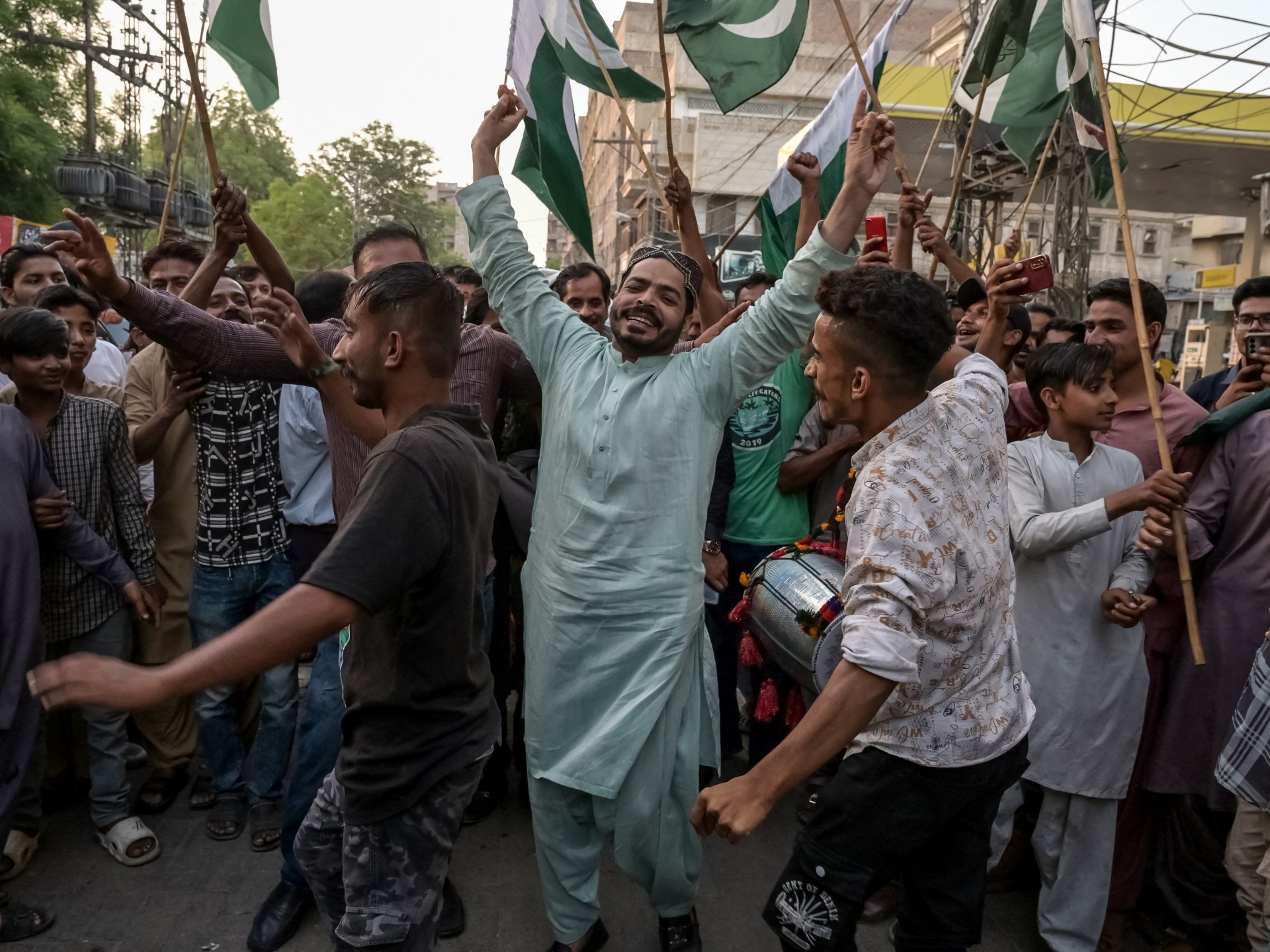
India and Pakistan have agreed to an immediate ceasefire after days of military escalation, deadly cross-border attacks, accusations and counter accusations, had raised acute concerns that the two nuclear-armed neighbours would engage in an all-out war for the fifth time since 1947.
But violations of the truce were reported later on Saturday as explosions rang out across parts of Indian-administered Kashmir.
Military officials from both countries had spoken to each other and agreed that all fighting would stop at 17:00 Indian time (11:30 GMT) on Saturday, bringing a halt to all firing and operations by land, air, and sea. This followed heavy overnight exchanges Friday into Saturday.
India’s Foreign Secretary Vikram Misri said the two military chiefs would speak to each other again on May 12.
“Pakistan has always strived for peace and security in the region, without compromising on its sovereignty and territorial integrity,” Foreign Minister Ishaq Dar said.
The announcement had met relief and joyous scenes by residents in both countries and in the areas of disputed Kashmir that each administers.
But just hours after the ceasefire was announced, explosions were heard across the city of Srinagar in Indian-administered Kashmir, according to Omar Abdullah, chief minister of the federal territory. “What the hell just happened to the ceasefire? Explosions heard across Srinagar,” Abdullah posted on X.
Al Jazeera’s Osama Bin Javaid, reporting from Lahore, Pakistan, said, “People are welcoming the ceasefire, but we are also reminded how precarious it is; ceasefire violations are already happening across the Line of Control in the disputed Kashmir region.”
“We’ve been hearing from local sources that there has been an exchange of fire in multiple locations in the Kashmir region, and there are some projectiles that have entered the Pakistani airspace, as well”, he said.
“We’re also hearing the loud explosions in Srinagar, similar to what was heard early Saturday and in the afternoon. Air sirens are all across, and there’s a power shutdown,” journalist Umar Mehraj told Al Jazeera from Srinagar.
“I can see projectiles flying, projectiles in the sky. It’s very unclear if they are missiles or air defence intercepting these attacks. Similar reports of the explosions are being heard in Baramulla and Jammu,” said Mehraj.
Electricity was cut off across multiple localities, adding to the confusion. With no official clarification on the nature of the blasts, some residents described feeling “abandoned and unprepared”.
“One of the blasts was so powerful it made the walls tremble. Authorities are not clarifying what is going on; we do not have any shelters, nor did we hear any sirens. We do not know what to do. There is only fear,” one Srinagar resident told Al Jazeera.
The ceasefire appears to have been mediated by international actors, but there are conflicting reports as to which countries played a crucial role.
US President Donald Trump claims it was the US – he was first to declare it on Truth Social post: “After a long night of talks mediated by the United States, I am pleased to announce that India and Pakistan have agreed to a FULL AND IMMEDIATE CEASEFIRE”.
“Congratulations to both Countries on using Common Sense and Great Intelligence,” he wrote.
Al Jazeera’s Mike Hanna, reporting from Washington, DC, noted, “There are questions about why the US did announce first. What sort of leverage does it have over India and Pakistan? We do know that it was a multilateral attempt to get a ceasefire. We do know, as well, that the United Kingdom has just signed a major trade deal with India, so it would also have great sway in this. Still, the US appears to be taking it further.”
However, Dar told broadcaster Geo News that Pakistan and India had agreed to a “full-fledged” and “not partial” ceasefire, adding that three dozen countries were involved in the diplomacy that secured it.
US Secretary of State Marco Rubio said the agreement also includes plans for broader talks at a neutral venue, which conflicts with a statement published on social media by India’s Ministry of Information and Broadcasting that says, “There is no decision to hold talks on any other issue at any other place.”

Broader Issues
Amid the cessation of hostilities, India and Pakistan have also agreed to a broader dialogue on various issues.
Two government sources told the news agency Reuters that all measures taken by India against Pakistan after April 22, including on trade and visas, remain in place.
Al Jazeera’s Osama Bin Javaid, reporting from Lahore, Pakistan, said that for the Pakistani side, the water issue is crucial “because India has suspended its related treaty with Pakistan, which affects the livelihood and agriculture in this country”.
Four government sources told Reuters that the Indus Waters Treaty, signed in 1960 between India and Pakistan, remains suspended.
The treaty regulates the sharing of water from the Indus River and its tributaries between the South Asian nations. India pulled out of it last month. It is crucial to agriculture in both nations.
“There are real fundamental political issues that need to be addressed so we don’t find ourselves again in a militarised crisis,” Elizabeth Threlkeld, director of the South Asia programme at the Stimson Centre, told Al Jazeera.
“The timing is significant since there is significant water flow between India and Pakistan because of the season at the moment. But in a few months’ time, that will start to dry up,” she said.
India does not necessarily have the infrastructure to meaningfully divert water right now, but it will gain that capacity when there’s less flow. So, that will have to be on the agenda of the talks if the two sides are to come together,” she added.

‘God has been kind to us for now’
Following the announcement of a ceasefire, residents on both sides of the Line of Control in Kashmir expressed a sense of relief, with many praying for a lasting solution to the Kashmir conflict.
“I was extremely anxious about what was happening,” 25-year-old Rumaisa Jan, a resident of Srinagar in Indian-administered Kashmir who has her wedding scheduled next week, told Al Jazeera. “This is the wisest decision taken after so many lives have been lost. We want peace and an end to all these hostilities.”
Firdous Ahmad Sheikh, who runs a travel agency in the city, said he was frustrated by Kashmir being turned into a “battleground” by the two countries.
“My only fear is that things could escalate again in future. These countries must sit together and find a political solution to Kashmir once and for all. I pray our children don’t have to witness such times again.
“God has been kind to us for now.”

In Muzaffarabad, capital of Pakistan-administered Kashmir, residents welcomed the ceasefire, saying they hope it will bring long-awaited relief to a region that has borne the brunt of recurring conflict.
“For us, peace means survival,” said Zulfikar Ali, a resident. “We’ve suffered enough. I’m glad that both Pakistan and India have made a sensible decision.”
Conflict Zones
India and Pakistan agree ceasefire: What does it mean? | India-Pakistan Tensions News
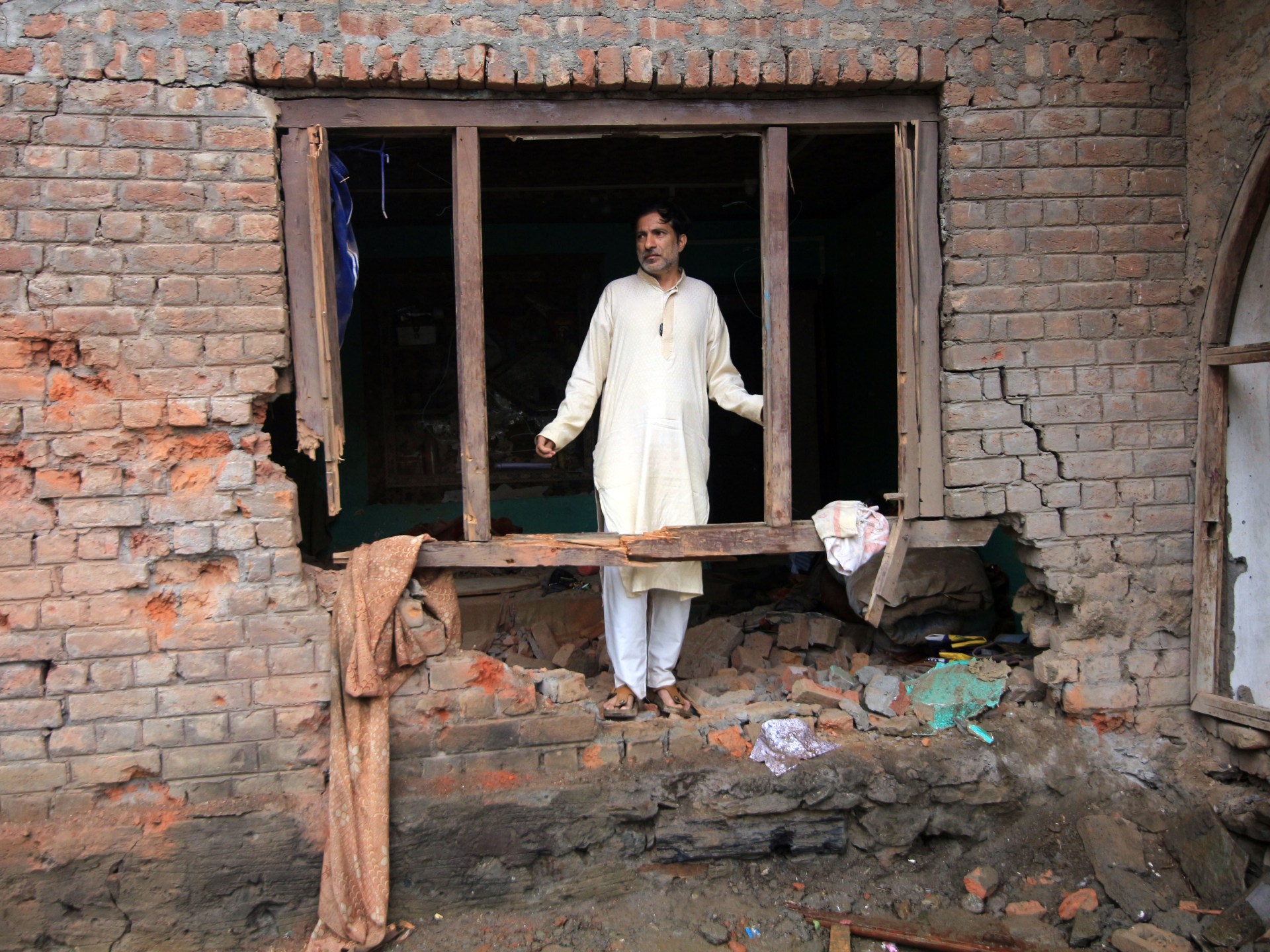
India and Pakistan have reached a ceasefire agreement following a brief period of hostilities over the past few days, United States President Donald Trump announced on Saturday.
Earlier on Saturday, the two neighbours targeted each other’s military sites as Pakistan launched “Operation Bunyan Marsoos” after three of its own airbases were hit by India’s air-to-surface missiles. Both sides claimed to have intercepted most projectiles, but also admitted that some strikes caused damage.
More than 60 people have been reported killed since India launched missiles under “Operation Sindoor” on Wednesday, which it said targeted “terrorist camps” in Pakistan and Pakistan-administered Kashmir. Pakistan has confirmed the killing of 13 people on its side of the Line of Control (LoC), the de facto border between the two countries dividing the disputed Kashmir region.
The strikes had raised fears of a wider conflict between the two nuclear-armed neighbours. While international mediation has resolved disputes between India and Pakistan before, it remains to be seen if this ceasefire will hold and whether people will be able to relax.
What has been agreed upon by India and Pakistan?
“After a long night of talks mediated by the United States, I am pleased to announce that India and Pakistan have agreed to a full and immediate ceasefire,” Trump wrote on his Truth Social platform on Saturday.
“Congratulations to both Countries on using Common Sense and Great Intelligence. Thank you for your attention to this matter!” Multiple countries are understood to have been involved in these talks.
Pakistan’s Foreign Minister Ishaq Dar and Indian Foreign Secretary Vikram Misri confirmed the ceasefire shortly after.
“It was agreed between them that both sides would stop all fighting and military action on land, air and sea with effect from 17:00 Indian Standard Time today [11:30 GMT],” Misri said in a short statement.
“Instructions have been given on both sides to give effect to this understanding. The directors general of military operations will talk again on May 12 at 12:00.”
India and Pakistan have also activated military channels and hotlines following the deal, according to Dar.
Will the two countries engage in further talks now?
US Secretary of State Marco Rubio also said India and Pakistan had agreed to start talks on a “broad set of issues at a neutral site”.
However, in a statement on social media, India’s Ministry of Information and Broadcasting partially denied this, stating: “There is no decision to hold talks on any other issue at any other place.”
Subir Sinha, director of the South Asian Institute at SOAS University of London, told Al Jazeera that broader bilateral talks would be a very challenging process as India had previously rejected such a development.
“One of the arguments about this so-called robust policy towards Pakistan that Modi’s government had adopted was that it was no longer possible to sit down and discuss a broad and long-term commitment to resolve issues,” Sinha said.
Therefore, this would mark a reversal of the Indian government’s position and could play out poorly with the right wing in India, whose members have been calling for an attack on Pakistan.
Sinha said both the Indus Waters Treaty, which India suspended its participation of and the Simla Agreement, which Pakistan threatened to pull out of, will need to be fully resumed and “to be looked [at] perhaps as bases for moving forward”.
Were India and Pakistan actually at war?
Officially, no. Despite intense military exchanges, including missile strikes, drone attacks, and artillery shelling, neither government made an official declaration of war.
India and Pakistan instead characterised their military actions as specific coordinated “military operations”.
Pakistan on Saturday launched a retaliatory assault it named “Bunyan Marsoos”, Arabic for “Wall of Lead”, just days after India initiated “Operation Sindoor“, responding to a deadly attack on tourists in Pahalgam on April 22, which it blamed on Pakistan-based armed groups.
However, that is not unusual for these two countries. They have not officially declared war in previous major conflicts, even as thousands of soldiers and civilians died.

Has third-party intervention solved disputes between India and Pakistan before?
Yes. Third-party mediation has resolved disputes since 1947, when the subcontinent split through partition and India and Pakistan fought their first war. After a yearlong war over ownership of the princely state of Jammu and Kashmir, a United Nations-brokered ceasefire effectively split Kashmir between Indian- and Pakistan-administered regions in 1948.
The 1965 Indo-Pakistani War ended with the Tashkent Declaration in January 1966, following mediation by the erstwhile Soviet Union. The accord saw Indian Prime Minister Lal Bahadur Shastri and Pakistani President Ayub Khan agree to pull back to pre-war positions and restore diplomatic and economic ties.
During the 1999 Kargil War, Pakistani troops crossed the LoC and seized Indian positions. Then-US President Bill Clinton convinced Pakistani Prime Minister Nawaz Sharif to withdraw, warning of international isolation.
In 2002, then-US Secretary of State Colin Powell claimed he and his team had mediated the end of a tense stand-off along the LoC following an attack on the Indian Parliament in December 2001. The following June, Powell said that through negotiations, he had received assurances from President Pervez Musharraf of Pakistan that “infiltration activity” across the LoC would cease and that armed groups would be dismantled on Pakistani territory.
What constitutes a war?
There is no single definition. International humanitarian law, such as the Geneva Conventions, uses the term “international armed conflict” instead of “war”, defining it more broadly as any use of armed forces between states, regardless of whether either side calls it a “war”.
In modern international law, all uses of force are categorised as “armed conflict” regardless of justifications such as self-defence, according to Ahmer Bilal Soofi, an advocate in the Supreme Court of Pakistan who also specialises in international law.
The suspension of a treaty can also signal the start of war, he added. India suspended its participation in the landmark Indus Waters Treaty with Pakistan on April 23, a move Pakistan described as a “hostile act”.
“Political scientists normally say a war only exists after fighting becomes quite intense – normally 1,000 battle deaths,” said Christopher Clary, assistant professor of political science at the University at Albany. “For governments, though, wars exist whenever they say so.”
Experts argue the recent escalation in military actions by India and Pakistan was as much about signalling strength as they were about military objectives, and was also part of a broader effort to manage domestic and international perception.
Sean Bell, a United Kingdom-based military analyst, said much of the current rhetoric from both India and Pakistan is deliberately aimed at domestic audiences. Each side is “trying to make clear to their own populations that there is a robust military response, and that they’re retaliating for any actions”, he told Al Jazeera. But this tit-for-tat dynamic, Bell warned, risks becoming difficult to stop once it starts.
Why are countries reluctant to formally announce a war?
Following the adoption of the UN Charter in 1945, “no country claims ‘war’ or declares ‘war’ as, legally speaking, it is viewed as unlawful use of force”, Soofi told Al Jazeera.
Officially, being in a state of armed conflict triggers international legal obligations, such as following the rules of armed conflict and being accountable for war crimes.
In the latest India-Pakistan standoff, both sides portrayed the other as the aggressor, insisting it should be the one to de-escalate.
The absence of a formal, universally accepted definition of war means countries can engage in sustained military operations without ever officially declaring war. Ambiguity also allows governments to frame military actions in ways that suit their political or diplomatic goals.
For example, Russia has consistently described its 2022 invasion of Ukraine as a “special military operation”, despite large-scale troop deployments, air strikes and territorial occupation. Similarly, the US referred to the Korean War in the 1950s as a “police action” and framed its long-term activities in Afghanistan and Iraq as “counterterrorism operations”. Israel also often uses terms like “military campaign” or “operation” for cross-border offensives, such as “Operation Protective Edge” during its 2014 war in Gaza.
Conflict Zones
Qatar leads Syria search for bodies of US hostages killed by ISIL: Report | Investigation News
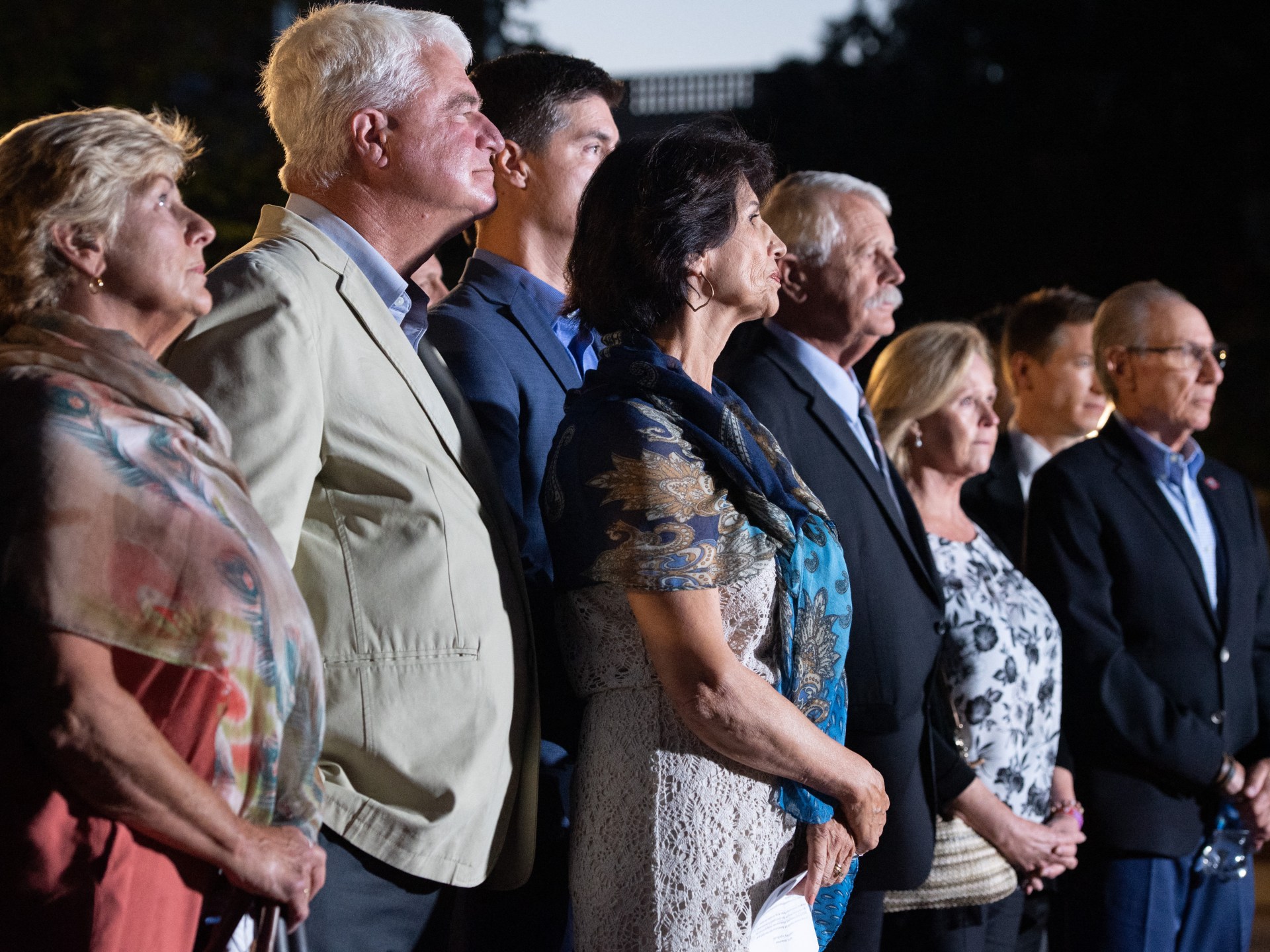
The search and rescue group has found the remains of three unidentified bodies so far, according to anonymous sources.
A Qatari mission has begun searching for the remains of United States hostages killed by the ISIL (ISIS) armed group in Syria about 10 years ago, according to the Reuters news agency, citing two sources briefed on the mission.
Qatar’s International Search and Rescue Group began the search on Wednesday, with the help of several US nationals who wished to remain anonymous, the news agency reported.
So far, three unidentified bodies have been found by the group, according to the sources. The mission’s focus was on locating the body of aid worker Peter Kassig, who was beheaded by ISIL in 2014 in Dabiq, northern Syria, a Syrian security source told Reuters.
US aid worker Kayla Mueller as well as US journalists James Foley and Steven Sotloff were among other Western hostages killed by ISIL. Foley and Sotloff were confirmed killed in 2014. Mueller’s killing was confirmed in 2015.
“We’re grateful for anyone taking on this task and risking their lives in some circumstances to try and find the bodies of Jim and the other hostages,” said Diane Foley, James Foley’s mother. “We thank all those involved in this effort.”
The Qatari mission is getting under way as US President Donald Trump prepares to visit Doha and other Gulf Arab capitals next week and as Syria’s new government seeks relief from sanctions imposed by the US.
Washington, along with some other Western governments, has said it will wait to see how the new authorities exercise their power and ensure human rights before lifting any sanctions.
The United Kingdom last month removed its sanctions on 12 Syrian government entities, including the Ministries of Defence and Interior and the General Intelligence Directorate.
Longstanding commitment
ISIL once controlled vast swaths of Syria and Iraq, ruling over millions of people. At the peak of its power from 2014-2017, it beheaded numerous people in captivity, including Western hostages, and released videos of the killings.
A coalition of more than 80 countries, led by the US, was formed to fight ISIL in September 2014.
The war against the group officially ended in March 2019, when US-backed and Kurdish-led fighters of the Syrian Democratic Forces captured the eastern Syrian town of Baghouz, the last sliver of land ISIL controlled.
Plans for the Qatari mission were discussed during a visit to Washington in April by Qatari Prime Minister Sheikh Mohammed bin Abdulrahman bin Jassim Al Thani and State Minister Mohammed Al Khulaifi – a trip also designed to prepare for Trump’s visit to Qatar, one of the sources told Reuters.
Another person familiar with the issue said there had been a longstanding commitment by successive US administrations to find the remains of the murdered US nationals, and that there had been multiple previous “efforts with US government officials on the ground in Syria to search very specific areas”.
The person did not elaborate, the report said. But the US has had hundreds of soldiers deployed in northeastern Syria that have continued pursuing ISIL’s remnants.
The person said the remains of Kassig, Sotloff and Foley were most likely located in this part of the country. Mueller’s case was different as she was in the custody of ISIL leader Abu Bakr al-Baghdadi, the person added.
Two ISIL members, both former UK citizens who were part of a cell dubbed the “Beatles” that beheaded US hostages, are serving life prison sentences in the US.
-
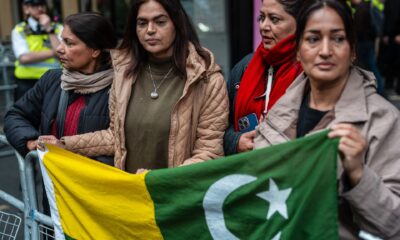
 Conflict Zones2 days ago
Conflict Zones2 days agoWho are the armed groups India accuses Pakistan of backing? | Armed Groups News
-
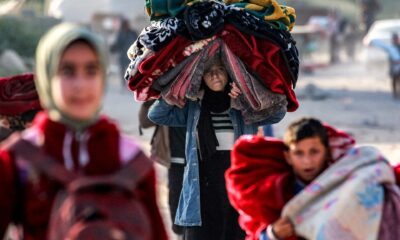
 Middle East2 days ago
Middle East2 days agoWorld could be witnessing ‘another Nakba’ in Palestine, UN committee warns | Israel-Palestine conflict News
-

 Europe2 days ago
Europe2 days agoPentagon considers shifting Greenland to US Northern Command, sparking concerns over Trump’s ambitions for the territory
-

 Middle East1 day ago
Middle East1 day agoIraq look to former Australia coach Arnold to boost 2026 World Cup hopes | Football News
-

 Education1 day ago
Education1 day agoTrump’s dismantling of Education Department gives states ‘green light’ to pursue voucher programs
-

 Sports1 day ago
Sports1 day agoNikola Jokić arrives wearing Joker-inspired suit, helps Denver Nuggets to overtime playoff win over Oklahoma City Thunder
-

 Europe1 day ago
Europe1 day agoEuropean leaders arrive in Kyiv in show of support for Ukraine
-
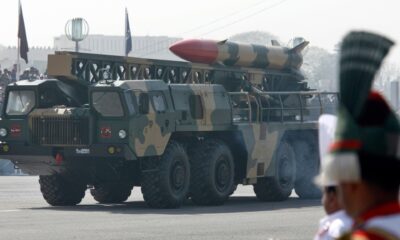
 Conflict Zones1 day ago
Conflict Zones1 day agoCould India, Pakistan use nuclear weapons? Here’s what their doctrines say | India-Pakistan Tensions News




